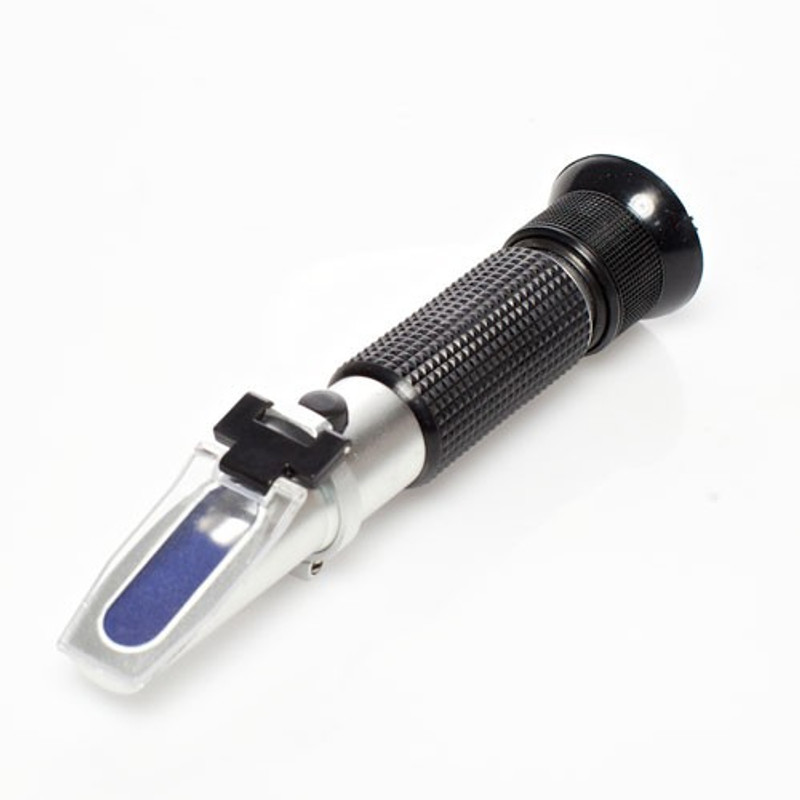Your refractometer is the perfect instrument for quick gravity measurements on brew-day.
With one of these, there is no more need for large sample volumes, no waiting for the wort to cool or correcting for temperature and no waiting for a hydrometer to stop bobbing around. This makes her the perfect tool for monitoring the gravity of your sparge as it comes out of the mash tun.
As you are about to find out, there's a lot more this instrument can do for you, but first the basics.
1. Calibrating your refractometer.
Under the plastic cap at the top of the instrument is a screw. To calibrate the hydrometer, all you need to do is wet the glass slide at the front of the instrument with water and adjust the screw so that the bottom of the blue box lies on the zero-line of the scale.
Ideally it will be distilled water at 20°C, but in practice water straight from the tap works fine.
2. Measuring gravity.
To measure the gravity of your wort, just place a sample on the glass slide, point towards a light source and take a reading.
The position of the bottom line of the blue box on the scale will give you the specific gravity reading of your wort. The instrument itself is fairly robust and will handle the temperature of the boiling wort. A small drop will cool almost instantly on the surface of the slide so you can get your reading immediately.
3. The Brix scale.
To the left of the gravity scale, you will see another measure - %Brix - and here's where the less obvious uses of your refractometer lie.
%Brix is the fraction by weight of sugar dissolved in liquid (% w/w). In other words, a reading of 8 %Brix is equivalent to 80 g of maltose in 1 L (1000 g) of water (80/1000 = 0.08 or 8%). In contrast, the % ABV (alcohol by volume) is a measure of the weight of ethanol by volume of water - 4% ABV is equivalent to 4 g of ethanol in 1000 mL. While the difference may seem pedantic with water, it is important with other solvents.
It is easy to convert between the two scales with your refractometer, just by running a line from either scale to the other.
If you have ever brewed a batch and haven't reached your original gravity, the %Brix scale can be useful to estimate the amount of dry malt-extract to add to reach your intended gravity.
For example, let's say I am brewing an Imperial Stout and I am aiming for an OG of 1080, but after my sparge and the boil I have only reached a gravity of 1060, how much light dry malt extract do I need to add to make my Stout 'Imperial'?
We can see from the scale of the hydrometer that a specific gravity of 1060 is about 15.5%Brix (i.e 155 g of maltose per liter of water) and a gravity of 1080 is just shy of 21%Brix (i.e. 210 g of maltose per liter of water). In order to raise our gravity to the desired level, we need to add the difference which is 55 g (210 - 155 = 55 g) per liter of wort. If we multiply this by the batch size, say 23 L, we have the quantity of dry malt extract to add - 1265 g or 1.265 kg.
It's as easy as that. There are some things that your refractometer can't do, like measure the gravity of your brew once it's started fermenting as the alcohol alters the refractive index of the wort, so it won't replace your hydrometer completely. But in terms of measuring what is happening on brew-day, there isn't anything better.

